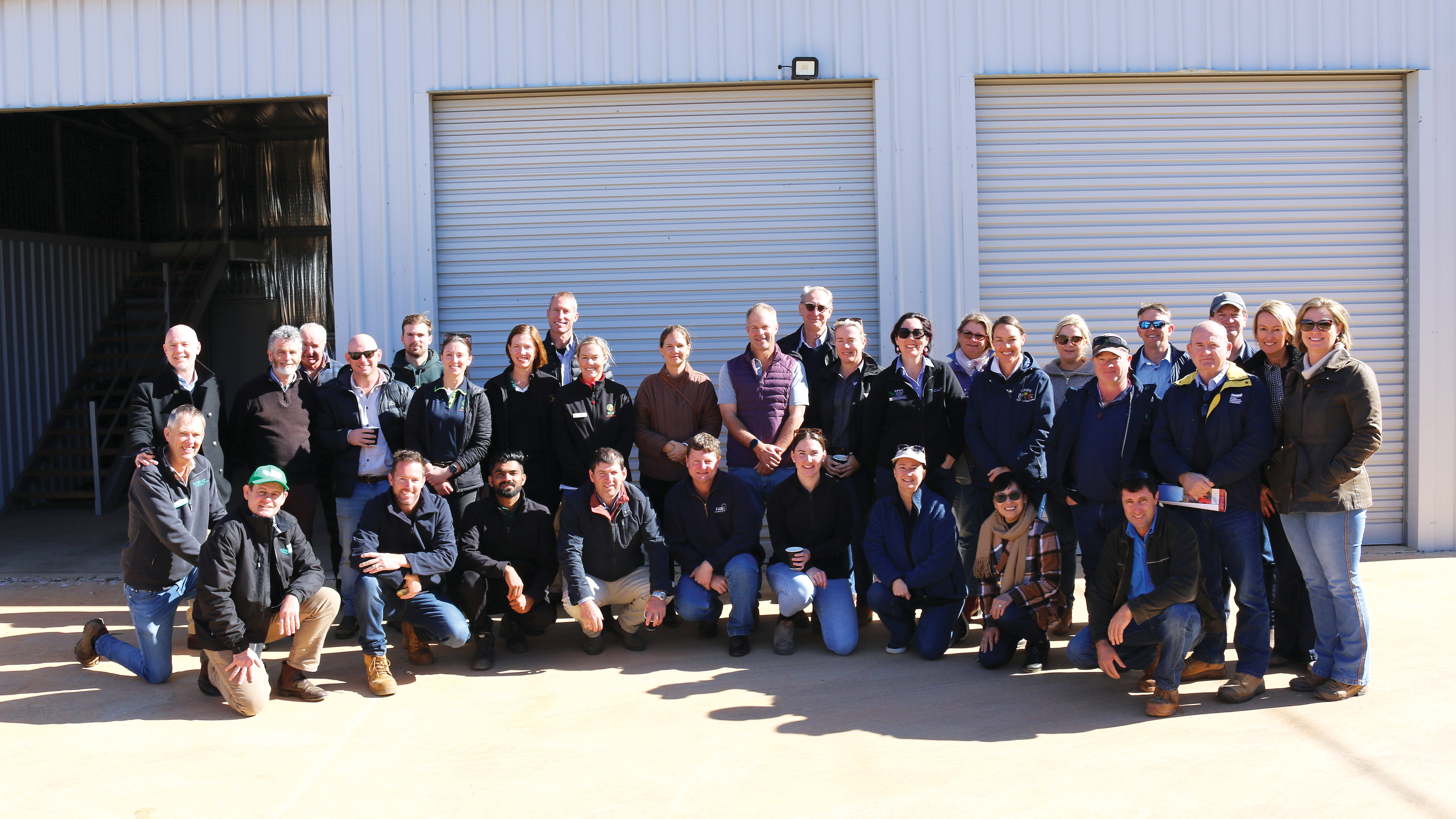Listening to results from the Liebe Group’s trials on canola sowing times proved an apt illustration of risk in farm decision-making for the 40 people who visited in late June. The trip to the Western Australian wheatbelt town of Dalwallinu was part of a broader three-day RiskWi$e event, bringing together grower groups, GRDC staff and researchers from across Australia to talk about early results and new priority themes.
RiskWi$e is a five-year, $30 million national GRDC investment that partners with CSIRO, major research partners the University of Melbourne, the University of Western Australia, the South Australian Research and Development Institute and the University of Queensland, plus six action research groups and 26 grower groups.
Daniel Kidd manages the Grower Group Alliance’s (GGA) involvement in RiskWi$e. There are eight western region grower groups involved, including the Liebe Group.
The Liebe Group’s time of sowing work highlighted how uncertainty and, in this case, the timing of the break and stored soil water was managed. For those on the tour it was a chance to talk ‘risk versus reward’ (Figure 1).
Growers in the Dalwallinu, Wongan-Ballidu, Moora, Perenjori, Carnamah and Coorow areas covered by the Liebe Group traditionally plant canola about 25 April. “Some decided to go for it, others decided to sow wheat as a lower-risk option,” Mr Kidd said.
“The combination of incorporating canola into the cropping system and early sowing have been large changes to our farming systems in this region that has elevated risk but also improved reward.”
He said talking through the Liebe Group’s fieldwork and results helped the risk discussion. “Everyone kept asking questions, which was a great illustration of the interest in better understanding risk and which risk you are willing to take.”
Mr Kidd said once a crop was established the next big decision was nitrogen. “In RiskWi$e we are testing different nitrogen decisions with the Liebe Group to establish what approach would best cope with the very large uncertainty on water supply and nitrogen demand.”
Figure 1: Cumulative rainfalll at Dalwallinu, Western Australia, and its impact on canola sowing and nutrient requirements.

Source: Liebe Group
RiskWi$e in the west
The WA grower groups partnering with GGA were excited about the participatory approach to RiskWi$e, Mr Kidd said. “We can explore topics that growers consider most risky and work out what they need to know more about to make a more informed decision.”
The RiskWi$e groups – Stirlings to Coast Farmers, South-East Premium Wheat Growers Association, Facey Group, Corrigin Farm Improvement Group, Western Australian No-Tillage Farmers Association, Liebe Group, West Midlands Group and Mingenew Irwin Group – have chosen to research nitrogen, sowing and machinery investment decisions.
“The beauty is that grower groups get to come up with what they see as their most important risky decisions and influence what is done to provide information to help,” Mr Kidd said.
CSIRO’s Dr Rick Llewellyn and Dr Lindsay Bell are leading the RiskWi$e initiative nationally. The team is looking at a range of risky decisions. Dr Bell says that a common national focus is on nitrogen decisions under uncertainty, with new priorities being technology and expansion.
RiskWi$e workshop
Before looking over RiskWi$e trials, the team attended a two-day workshop in Perth. It was the first time the national network of RiskWi$e grower groups had met since RiskWi$e was officially launched in August last year.
The aim was to harness a grassroots focus on grain production’s riskiest decisions and how uncertainty associated with these decisions could be better informed to improve profit and risk trade-offs.
Dr Bell said the purpose was to:
- share progress on the nitrogen decision’s theme to better define uncertainty and profit outcomes;
- develop a deeper understanding of emerging insights from behavioural science studies; and
- share the range of new themes initiated in RiskWi$e phase two (2024).

The RiskWi$e team travelled to Dalwallinu, Western Australia, in late June, bringing together grower groups, researchers and GRDC staff from across Australia to talk with local growers about challenging on-farm decisions and the new initiative. Photo: Liebe Group
Nitrogen targets
The University of Melbourne’s Dr James Hunt leads this theme and spoke about a nitrogen decision-making framework. More tactical approaches like using YieldProphet® are being compared to more strategic approaches like replacement of removed nitrogen or nitrogen banking, which sets a target based on climate and soil metrics.
Researchers Chris O’Callaghan from the Liebe Group, Dr Yvette Oliver from the Birchip Cropping Group, Maurie Street from the Grain Orana Alliance, and Bek Allen from HART spoke about lessons learnt so far.
Participatory action research
CSIRO’s Dr Rick Llewellyn, Queensland Department of Agriculture and Fisheries’ Dr Jayne Gentry, AgGrow Agronomy and Research’s Barry Haskins, and West Midlands Group’s Nathan Craig spoke about using this approach to maximise impact by bridging the ‘relevance gap’.
Machinery purchase decisions
Planfarm’s Peter Newman spoke about financial decisions, farm machinery and working with decision-makers and advisers.
Behavioural science insights
CSIRO’s Dr Brendan Brown, University of Western Australia’s Professor David Pannell and Dr Fiona Dempster, and the Birchip Cropping Group’s Dr Yolanda Plowman presented behavioural research and how this linked with on-farm decision-making.
Graeme Sandral, who leads the initiative for GRDC, said the diversity of the grower groups taking part was reflected in the research being investigated. “It is an exciting project to be involved in; it pushes new boundaries in its approach, focus and scale – nothing like it has been attempted previously.”

Facey Group executive officer Tina Astbury and agricultural research and extension coordinator Ravi Parmar at the Liebe Group’s soil amelioration trial. Photo: Daniel Kidd
More information: RiskWi$e

























































